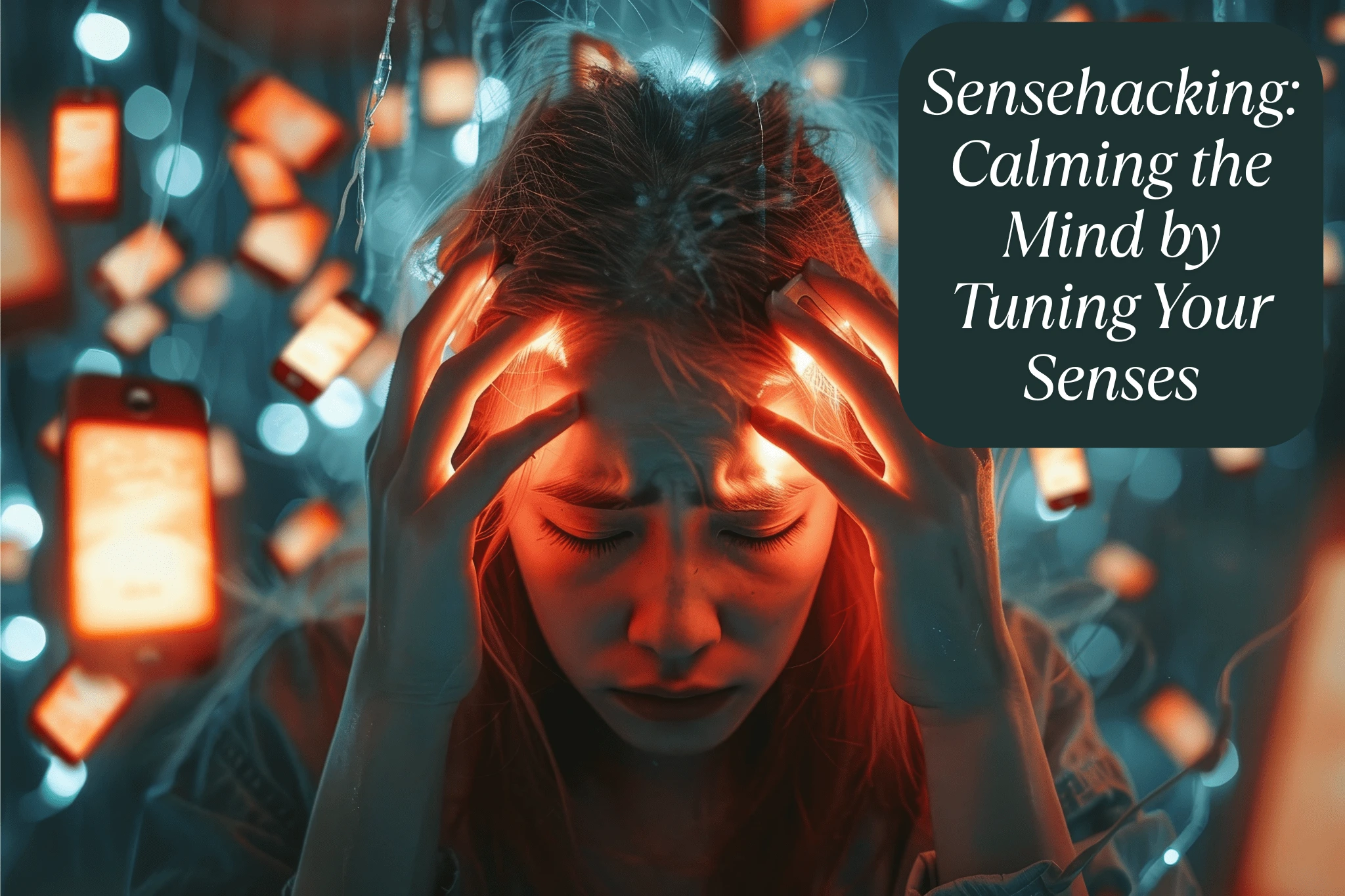One of the biggest problems nowadays is the constant disturbance caused by our own thoughts. In a world filled with stress, information overload, and endless distractions, our minds often become overwhelmed with negative, repetitive, or anxious thinking. These unregulated thoughts can cloud our judgment, increase stress levels, and impact our emotional well-being. That’s why it is essential to learn effective methods to manage and regulate our thoughts. Techniques such as mindfulness, cognitive reframing, meditation, and sensehacking can help us break the cycle of negative thinking and promote a more balanced, positive mindset. By gaining control over our internal dialogue, we can reduce mental clutter, improve focus, and experience greater peace of mind in our daily lives.
Discover how sensehacking—tuning your senses—can help reduce stress, improve focus, and restore calm. Learn practical techniques to hack your senses and reset your nervous system naturally.
Introduction
In today’s hyper-stimulated world, stress and anxiety have become everyday companions for many. But what if the key to calming your mind isn’t in your thoughts—but in your senses? Welcome to sensehacking, a growing trend in wellness that uses sensory input to regulate your nervous system, boost mental clarity, and enhance emotional wellbeing.
What Is Sensehacking?
Sensehacking is the practice of using sensory stimulation—sight, sound, smell, touch, and taste—to influence your emotional and mental state. Rooted in neuroscience and psychology, it acknowledges how profoundly your environment impacts your mood and mind.
Rather than relying solely on cognitive strategies like meditation or journaling, sensehacking offers body-based tools to shift your state quickly and naturally.
Why Sensehacking Works: The Science
Your nervous system is always responding to sensory input. The autonomic nervous system, which governs stress responses, can be either activated or soothed depending on what your senses experience.
Here’s how it works:
- Visual input affects brain waves and hormones like cortisol.
- Sound frequencies can sync with heart rate and breath.
- Aromas influence the limbic system, which controls emotions.
- Touch impacts oxytocin and reduces pain or stress.
- Taste can signal safety and satisfaction to the brain.
By consciously choosing sensory inputs, you can hack your environment to support calm, focus, and relaxation.
5 Practical Sensehacking Techniques to Calm the Mind
1. Visual Sense: Use Soft Lighting and Natural Colors
- Swap harsh LED lights for warm, dim lighting.
- Add nature-inspired hues like greens and blues to your workspace.
- Try visual meditation, focusing on a candle flame or mandala.
2. Auditory Sense: Tune into Calming Sounds
- Listen to binaural beats or nature sounds like rain or ocean waves.
- Create a “soundscape” playlist for focus or wind-down time.
- Use noise-canceling headphones to reduce overstimulation.
3. Olfactory Sense: Aromatherapy for Instant Calm
- Diffuse calming essential oils like lavender, bergamot, or cedarwood.
- Keep a scent roller handy during stressful moments.
- Try “scent anchoring”: associate a specific aroma with relaxation through repetition.
4. Tactile Sense: Activate the Power of Touch
- Use textured objects like fidget tools or soft fabrics.
- Try weighted blankets for deeper rest.
- Practice self-massage or acupressure to release tension.
5. Gustatory Sense: Soothe with Taste
- Sip on herbal teas like chamomile or peppermint.
- Use mindful eating to bring awareness to flavors and textures.
- Chewing gum or sucking on a mint can help reduce anxiety in the moment.
Integrating Sensehacking into Daily Life
Start small: choose one sense to focus on for a week. For example:
- Monday: Adjust lighting and declutter your visual space.
- Tuesday: Play calming music while commuting or working.
- Wednesday: Add aromatherapy to your bedtime routine.
Over time, you’ll learn which sensory hacks work best for your body and brain—and how to use them to quickly shift from stressed to centered.
Benefits of Sensehacking
- Reduces anxiety and stress
- Improves focus and productivity
- Supports emotional regulation
- Enhances sleep and relaxation
- Creates a calming, sensory-friendly environment
Sensehacking is not just a tool—it’s a lifestyle shift. By tuning into your body’s sensory needs, you build resilience against burnout and feel more grounded every day.
Final Thoughts: Tune In to Tune Out Stress
Modern life is full of noise, but your senses offer a natural path to peace. With a little awareness and practice, you can sensehack your way to better mental health—one sound, scent, or soft touch at a time.












